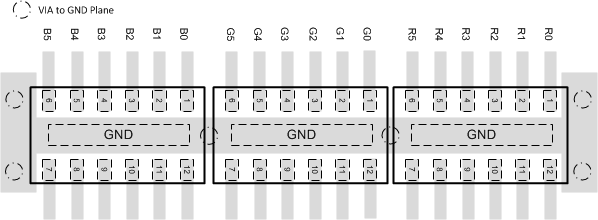ZHCSDL8A December 2014 – February 2015 TPD6F002-Q1
PRODUCTION DATA.
11 Layout
11.1 Layout Guidelines
- The optimum placement is as close to the connector as possible.
- EMI during an ESD event can couple from the trace being struck to other nearby unprotected traces, resulting in early system failures.
- The PCB designer needs to minimize the possibility of EMI coupling by keeping any unprotected traces away from the protected traces which are between the TVS and the connector.
- Route the protected traces as straight as possible.
- Eliminate any sharp corners on the protected traces between the TVS and the connector by using rounded corners with the largest radii possible.
- Electric fields tend to build up on corners, increasing EMI coupling.
11.2 Layout Example
This application is typical of an 18-bit RGB display panel layout.
 Figure 9. TPD6F002-Q1 Layout
Figure 9. TPD6F002-Q1 Layout